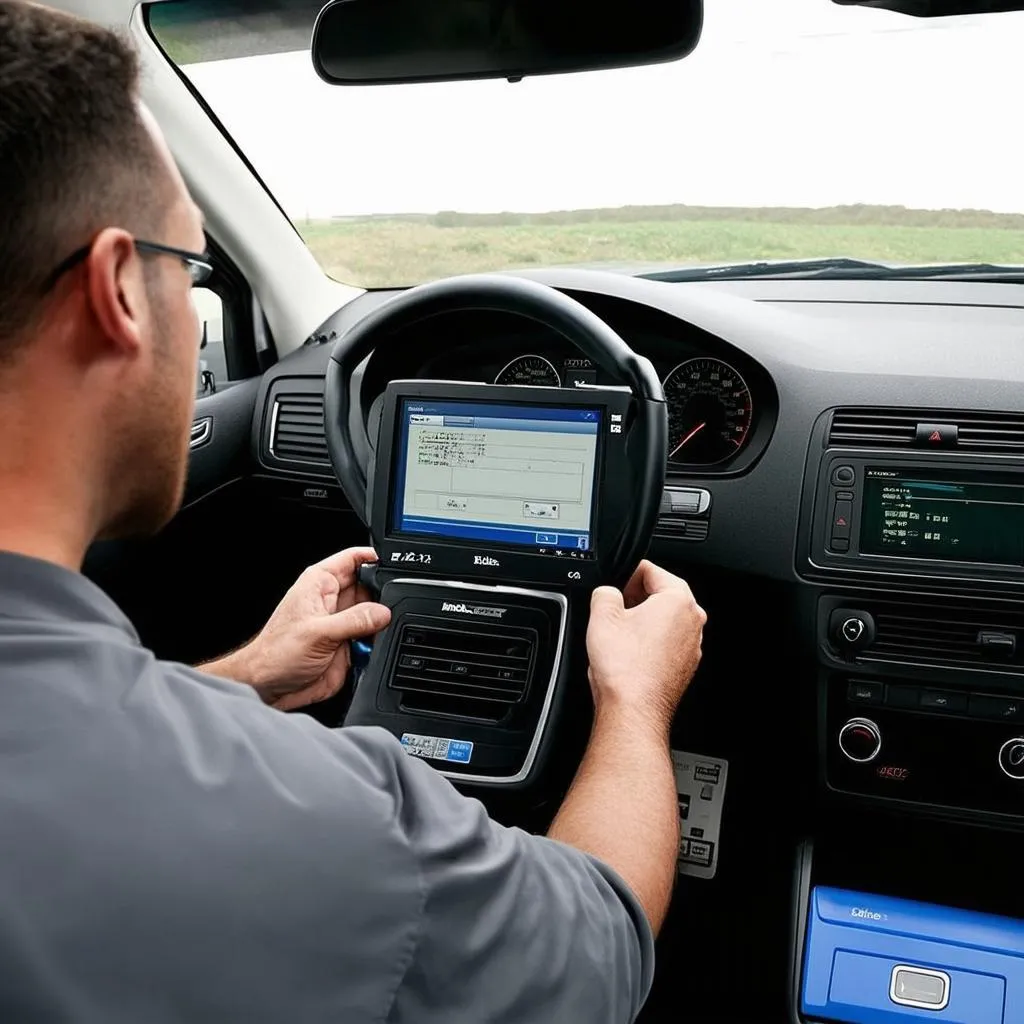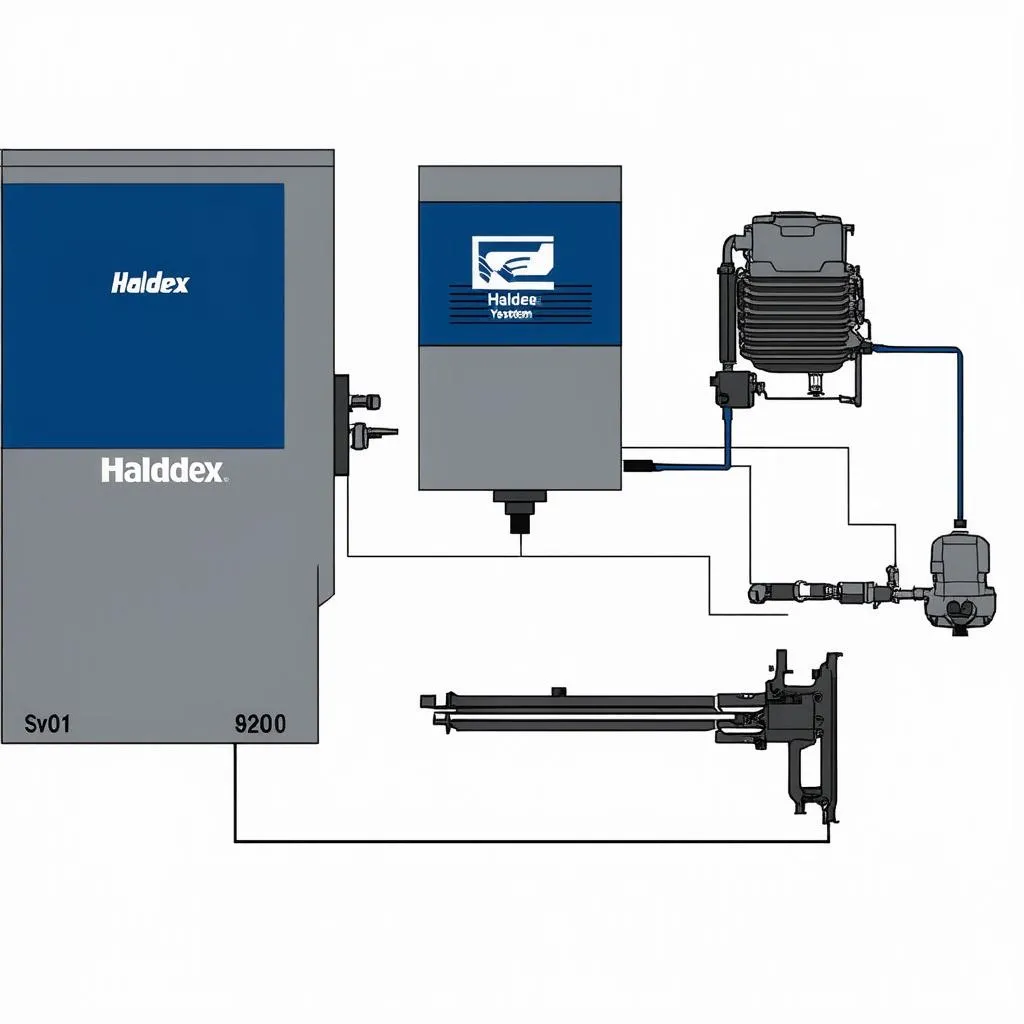VCDS Haldex Adaptation: A Comprehensive Guide for VW & Audi Owners
Have you ever experienced a sudden loss of traction in your Volkswagen or Audi while driving on a slippery surface? This could be a sign of a Haldex system malfunction. The Haldex system is an electronically controlled multi-plate clutch that distributes torque to the rear wheels when needed, providing improved traction and stability.
Understanding VCDS Haldex Adaptation: The Importance of Proper Maintenance
VCDS, or the Volkswagen Diagnostic System, is a powerful tool that allows you to access and modify various settings in your vehicle, including the Haldex system. Haldex adaptation is a crucial procedure that calibrates the system’s operation and ensures proper engagement of the rear wheels.
The Significance of Haldex Adaptation
Imagine a car as a living organism, where each component plays a vital role in its smooth functioning. Haldex adaptation is like a “yoga session” for the Haldex system, helping it to function optimally and maintain a harmonious flow of power. A well-adapted Haldex system promotes longevity and reduces the likelihood of unexpected problems, like the one we mentioned earlier.
Why Is Haldex Adaptation Necessary?
1. Mechanical Wear and Tear:
Over time, the Haldex clutch plates wear down, affecting the system’s performance. Adaptation helps compensate for this wear and tear, ensuring a smooth and efficient transfer of power.
2. Fluid Changes:
Haldex fluid needs to be changed regularly to maintain its effectiveness. After a fluid change, adaptation is essential to re-calibrate the system.
3. Modifications:
Any modifications to the Haldex system, such as replacing components, require adaptation to ensure proper function.
4. Fault Codes:
If your Haldex system throws up fault codes, adaptation can often clear them and restore the system’s functionality.
5. Improved Performance:
A properly adapted Haldex system can significantly improve traction and stability, particularly in challenging driving conditions.
VCDS Haldex Adaptation: A Step-by-Step Guide
Now, let’s delve into the specifics of performing a Vcds Haldex Adaptation.
Disclaimer: While this guide provides a general overview, it’s crucial to consult with a qualified mechanic or specialist before attempting any complex modifications.
Required Tools:
- VCDS cable
- VCDS software
Steps:
- Connect your VCDS cable to your car’s diagnostic port.
- Open the VCDS software and select the “Haldex” control module.
- Navigate to the “Basic Settings” section and select the “Adaptation” option.
- The software will guide you through the adaptation process, typically involving several steps.
- Follow the prompts on the screen and enter the required values.
- Once the adaptation is complete, test drive your vehicle to ensure the system is working correctly.
Important Considerations:
- Specific adaptation procedures may vary depending on the vehicle model and year.
- Refer to the VCDS documentation or online resources for detailed instructions specific to your car.
Troubleshooting Tips & Frequently Asked Questions
Q: How often should I perform a Haldex adaptation?
A: It’s generally recommended to adapt your Haldex system every 25,000 miles or after a fluid change. However, it’s best to consult your car’s owner’s manual for specific recommendations.
Q: Can I perform a Haldex adaptation myself?
A: While VCDS is relatively user-friendly, performing a Haldex adaptation requires a basic understanding of automotive electronics. If you’re not comfortable working with diagnostic tools, it’s advisable to seek professional help.
Q: What are the signs of a malfunctioning Haldex system?
A: Some common symptoms include:
- Loss of traction in slippery conditions.
- Increased wheel spin.
- Noise or vibration coming from the rear axle.
- A warning light on the dashboard indicating a Haldex system error.
Q: What are some alternatives to VCDS for Haldex adaptation?
A: Other diagnostic tools, such as Launch X431 or Autel MaxiSys, may offer similar functionality for Haldex adaptation. However, VCDS remains a popular choice due to its user-friendliness and extensive compatibility.
Haldex Adaptation: Enhancing Performance, Promoting Harmony
As we’ve explored, Haldex adaptation is a crucial step in maintaining the optimal performance of your Volkswagen or Audi. Just as a skilled musician fine-tunes their instrument to produce beautiful melodies, proper adaptation helps your Haldex system achieve its full potential, ensuring a smooth and harmonious driving experience.
 Haldex adaptation with VCDS
Haldex adaptation with VCDS
Additional Tips & Resources
- Always consult with a qualified mechanic or specialist for any major repairs or modifications.
- Ensure that your Haldex fluid is changed at recommended intervals.
- Regularly inspect the Haldex system for any signs of leaks or damage.
- Keep an eye out for warning lights on your dashboard and address any errors promptly.
Contact Us for Expert Support
At CardiagXpert, we understand the importance of proper diagnostics and maintenance for your vehicle. If you have any questions or need assistance with VCDS Haldex adaptation or other automotive diagnostic procedures, our team of certified technicians is available to provide 24/7 support.
Contact us on Whatsapp: +84767531508
Don’t hesitate to reach out to us for expert guidance! We’re here to help you keep your car running smoothly and safely.
 Haldex system diagram
Haldex system diagram
Let us know your thoughts and experiences with Haldex adaptation in the comments below!
We encourage you to explore our website for more informative content on automotive diagnostics and repair, including:
Stay tuned for more insightful articles and expert tips!
